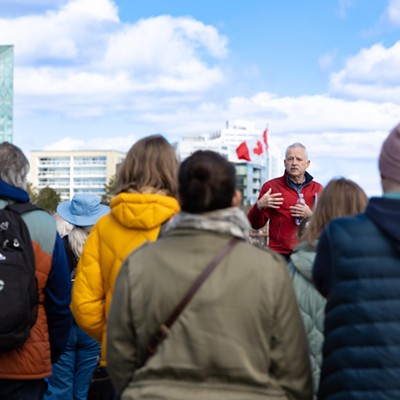That’s right, the dumpster fire of good governance that is the Strategic Road Safety Framework policy refresh is coming to the Transportation Standing Committee.
For those that are unaware, one of the central tenets of Western democracies, Canada and the HRM is that of good governance. There’s a lot to good governance, but at its most basic we should be able to expect that when our government spends our tax dollars, they do not do so expecting to increase the injuries and deaths among the population they govern. But in Halifax, our bureaucracy is happy to recommend to council a safety framework that will spend our tax dollars on a framework that will likely result in an increase of violence on our roads. This will be considered a success as long as our population continues to grow to mask the increase in that violence.
This is a major concern for two reasons. The first is that I have been concerned about the city’s injury reporting because when I started talking to people who have been injured in collisions, their injuries were not being recorded in the city’s data. This has led me on a wild hunt for this information, which I can not find. I can’t get this information because no government agency keeps road violence information in any coherent way. The only consistent way to get traffic safety info is to use what is provided in police reports, which is what the city does. But those police reports do not capture injuries that are not treated on scene, or in collisions where police are not present.
This led me to try to find out how many injuries we have from medical databases because of this article. However, the dataset used in their methodology is not robust enough for the HRM or Nova Scotia. Personal injury law firms, insurance companies and physio clinics were unwilling to part with this data (as it could involve inadvertently disclosing client information). And while the courts do have all of this data, it is organized in a way to make running courts easier and not in a way to provide data on our transportation network. With the fragments of information I was able to find I believe that the city’s streets are far more dangerous than recorded by municipal data. Orders of magnitude more dangerous, but I can’t say for sure if it’s one order, 10 orders or 100 orders of magnitude worse than we think.
In some correlational supporting data, we also know that car insurance rates are increasing due to, in part, the increased prevalence of car crash claims and the increasing severity of driving-generated injuries.
This, in turn, means that we don't actually know what the road violence stats are. Suppose the end goal of the strategic road safety framework is to reduce deaths on HRM roads to zero, and we know our data set under-reports the level of violence on HRM roads. Why are staff proposing the per capita reporting metric which allows for more violence, instead of the safer absolute metric?
“The municipality is choosing to move forward with per capita statistics because of the significant rate of growth the municipality is experiencing at the moment. When growth flattens out the measure would become an absolute measure,” writes a city spokesperson in an email.
The municipality's statement has some significant issues. In the initial version of the road safety plan passed in 2018, staff wrote that achieving zero injuries or fatalities on HRM’s roads would be hard but possible with a good strategic plan and suggested that an absolute reduction in injuries by 20% would be a good goal.
In the 2024 policy update staff explain why the 2018 plan has failed (we are Canadian leaders in injuring pedestrians on a per capita basis) by writing: “While infrastructure improvements can be highly effective and are a critical component of road safety, engineering projects can be costly, and the safety improvements are typically localized to the project area.”
While it is true that changing our infrastructure is and will be expensive, that’s because there are only two ways to improve road safety for all road users.
1) Decrease the number of drivers.
2) Physically prevent drivers from hitting other road users.
That’s it. According to the best available evidence, those are the two ways to reliably and consistently make roads safer.
But even though those are relatively simple fixes, the reason it will be expensive and hard to make our roads safer is that since about 1950 most if not all of the public’s transportation money has been going to build out and improve car infrastructure. While the difficulty and costs associated with changing from automotive infrastructure to safe transportation infrastructure go up, not down, the longer we wait to change our transportation to be safer.
Staff are deliberately choosing to make this problem harder to solve by waiting for the population to “flatten” even though at Tuesday’s council meeting councillors gave first reading to bylaw changes that are expected to increase the available housing in the HRM by hundreds of thousands of units in the coming years. The city is proposing to make our roads more dangerous in the short term
This failure of the municipal bureaucracy is so profound it requires action on your part. While it is true that fixing this problem will be both challenging and expensive, this is only exacerbated the longer the municipality waits to take action.
Moreover, I do not for one second believe that anyone working for this city, or anyone elected to council believes that tax money should fund infrastructure that we know already will disproportionately harm and kill our elderly and our young. So I fundamentally don't understand why our municipal government can't have a 'try to kill zero people with public infrastructure' as the goal of the new Strategic Road Safety Framework. Please write your councillor. This is insane.












